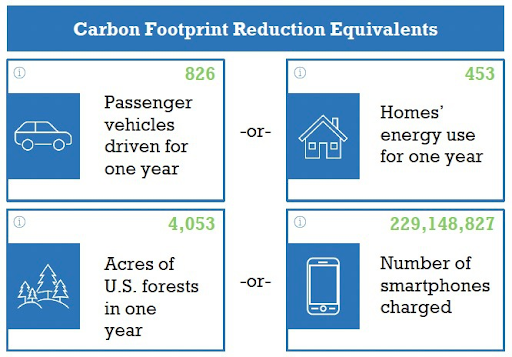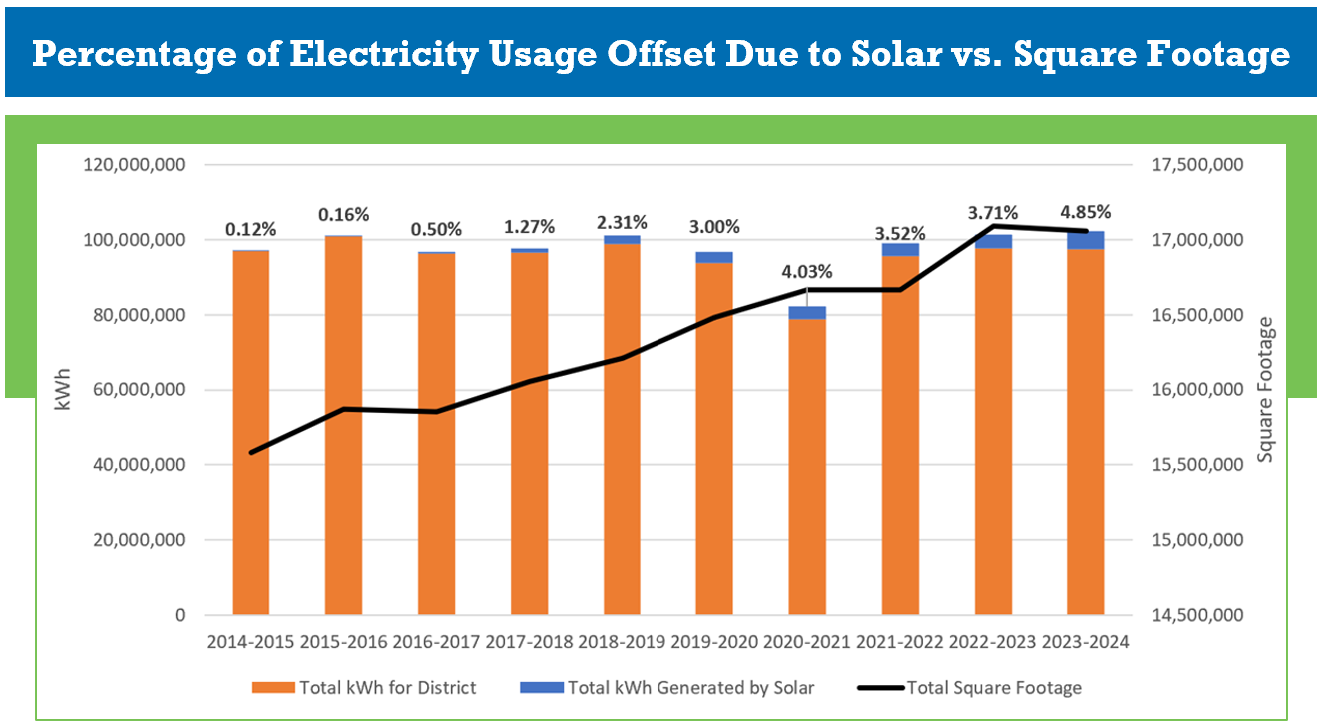Now a recognized leader in reducing utility costs per square foot, APS sets an example for other school districts. The collaborative work between executive leadership and the facilities team demonstrates how strategic energy management can drive measurable results, benefiting both the district’s financial stability and its educational environment.
Albuquerque Public Schools’ decade-long success in energy and water conservation is a direct result of strong leadership and collaboration throughout the district. APS has achieved remarkable milestones—avoiding $18.5 million in utility costs and generating $3.6 million in positive financial returns.
Albuquerque Public Schools (APS) recognized its need for energy optimization as a way of reducing environmental footprint while redirecting monetary savings to benefit students. In 2013, APS established an ambitious policy for water and energy usage–20% reduction in 10 years. As a result, APS created WECC (Water and Energy Conservation Committee) to be a steward of the environment and taxpayers’ dollars while prioritizing education.
Following the establishment of WECC, the APS Energy Team was formed by employees from the APS Facilities Design + Construction and Maintenance & Operations Department. The APS Energy Team was tasked with reducing electric, gas and water waste without ever forfeiting the learning environment of students. With 164 facilities and $20 million in annual utility spend, the APS Energy Team had to find a way to reduce waste and measure their progress toward the goal of 20% reduction in 10 years.
APS learned about Mountain Vector Energy from one of our clients, Presbyterian Healthcare Services, and they reached out to discuss how we could help them make sense of all the data and achieve their goal.
Mountain Vector Energy answered the call to guide the APS Energy Team along their 10 year journey. First, we created a baseline and established metrics to measure performance against the goal. In partnership with the APS energy team, we shaped the APS energy management program.
Using our patented Cufflink technology that measures real-time utility usage and spend across all school buildings, we inform the APS Energy Team on opportunities for savings. We meet with the APS Energy Team and WECC on a regular basis to discuss conservation progress, challenges and opportunities. We are proud to demonstrate our leadership in this program.
APS has become a leader in sustainability education. They involve their students and teachers through educational events, encouraging its 77,304 students to participate in their Energy Wise campaign. APS presents the changes they’ve made at conferences like CGCS (Council of Great City Schools). We explain the data behind their story for outward-facing communications.
Over the course of APS’s 10 year energy optimization journey, the district achieved a net savings of $3,605,967. Over the course of the decade, APS also increased their square footage by 9.46%. Had they not implemented the multitude of energy reduction measures, they would have spent an additional $18.5M in utility costs. This sum was avoided from usage savings and measures like boiler optimizations, occupancy scheduling, unoccupied setbacks, irrigation management, leak detection, HVAC upgrades, seasonal shutdowns and new solar installs.
The total EUI (Energy Usage Index) for the district for electricity and gas surpassed its 10-year reduction goal EUI. In particular, natural gas consumption decreased by 25.16% per square foot compared to its baseline usage. Electricity consumption through 2023-24 decreased by 2.47% per square foot despite APS’ growing footprint.
Total gallons of water consumed decreased by 14.81% compared to the baseline year. Empirically, a cumulative total of 442,213,113 gallons have been saved over the 10-year goal period. The decrease in water consumption was driven by controls upgrades, management and leak detection.
In addition to usage savings $1.76M recovered in electricity, gas and water rebates, credits and grants. In addition, over $3.6M has been recovered in the rental fees APS charges outside entities for the use of their space, offsetting energy and water costs. Rebates and facility rental fees continue to bring operational funds back into the classroom.

Square Feet
Buildings
Solar Facilities – 4.9 MW
Meters
Annual Utility Spend
Increase in Square Footage
2019 – Environmental + Energy 100 List presented to Tony Sparks by the Environment and Energy Leaders Institute.
2019- Best of Green Schools Award in Policy Maker category presented to Karen Alarid by the Green Schools National Network and the Center for Green Schools (at the U.S. Green Building Council).
2017- Region IV Energy Manager of the Year Award presented to Tony Sparks by the Association of Energy Engineers (AEE).
2016- Region IV Institutional Energy Management Award presented by the Association of Energy Engineers (AEE).
 2015- Better Buildings Challenge Partner formally acknowledged by Ernest Moniz, U.S. Energy Secretary, DOE (Department of Energy). APS leaders were invited to present at the Better Buildings Summit in Washington, DC.
2015- Better Buildings Challenge Partner formally acknowledged by Ernest Moniz, U.S. Energy Secretary, DOE (Department of Energy). APS leaders were invited to present at the Better Buildings Summit in Washington, DC.
Avoided from Usage Savings
Net Savings
Electricity Reduction

What’s affecting your utility costs?
Get in touch to discuss how you can reduce waste and immediately understand the monetary savings of Energy Conservation Measures.